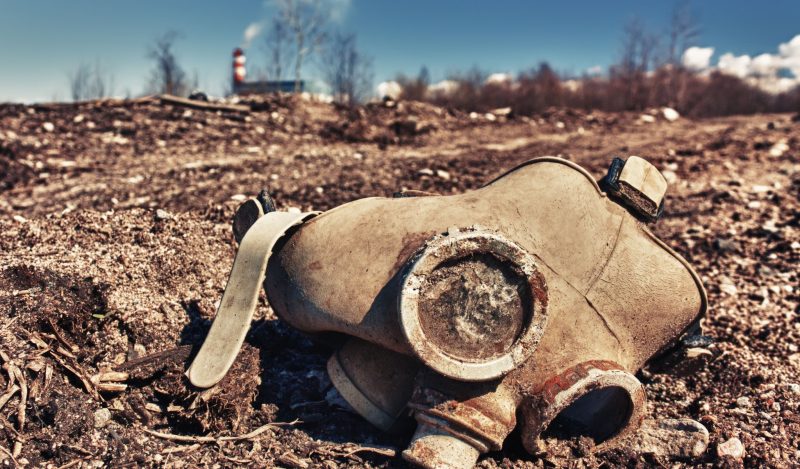Whether to wear a face mask to prevent respiratory illnesses has been one of the most divisive debates during the pandemic.
After a Cochrane review in 2023 found that face masks made “little or no difference” to the spread of respiratory viruses, the issue became highly politicised.
Tom Jefferson, lead author of the Cochrane review, told me “There is just no evidence that they make any difference. Full stop.” The interview was picked up by media such as the New York Times and CNN, sparking an international furore.
New York Times columnist Zeynep Tufekci pushed back in her own column arguing that despite no high-quality data, we could still conclude from less rigorous observational studies, that masks do in fact work.
Well-known science historian and co-author of Merchants of Doubt Naomi Oreskes agreed with Tufekci, claiming the public had been “misled” by the Cochrane review because it prioritised high-quality studies and excluded less rigorous ones.
When former CDC Director Rochelle Walensky was challenged about her controversial mask mandates in light of Cochrane’s findings, she lied to Congress, claiming that the review had been “retracted” when it had not.
Then, in September 2023, former White House physician Anthony Fauci told CNN, “There’s no doubt that masks work.” Fauci said that while studies might show masks do not work at a population level, they do work “on an individual basis.”
Could this be true?
Well, a new study published in the BMJ is being touted as proof that face masks are effective at an individual level for reducing respiratory infections.
The Study
Researchers in Norway performed a ‘pragmatic’ randomised trial in the off-peak period of “the normal influenza season” to determine if wearing a surgical face mask in public could reduce the risk of contracting a respiratory illness.
This study was sufficiently powered to detect a difference in outcomes in a real-world setting.
Over a 14-day period (between Feb-April 2023), 4,647 participants were randomly assigned to either wear a surgical mask in public places (shopping centres, streets, public transport) or not to wear a surgical face mask in public places (control group).
The group wearing masks showed an absolute risk reduction of ~3 percent in “self-reported symptoms consistent with respiratory infection” (8.9% mask group; 12.2% control group, 95% CI 0.58 to 0.87; P=0.001).
The authors concluded, “Wearing a surgical face mask in public spaces over 14 days reduces the risk of self-reported symptoms consistent with a respiratory infection, compared with not wearing a surgical face mask.”
In an accompanying editorial, the authors of the study anticipated their findings would inflame an already divisive debate, and called for more “open and nuanced discussions” about face masks.
“We know exactly what to expect,” they wrote.
“Mask non-believers will describe the effect size as too small to be of interest, and they will intensively highlight any source of potential bias that might have inflated the results in the wrong direction. Of course, the mask believers will do the same but in the opposite direction.”
The authors said they would welcome “a nuanced debate around the potential biases and the interpretation” of the study findings, so here I go…
Analysis
I would argue that an absolute reduction of 3% in self-reported symptoms from people wearing masks is not a clinically meaningful result.
There are several reasons why.
First, in such a study, you obviously cannot blind the participants to one group or the other. People know they’re wearing a mask and may be less likely to report symptoms if they feel “protected.”
In fact, a pre-specified subgroup analysis showed a “beneficial effect was estimated for participants who reported that they believed face masks reduced the risk of infection,” indicating the study suffered from ‘reporting bias.’
Second, the study found wearing a mask changed people’s habits, which may have accounted for the small difference between groups.
For example, people in the control group were more likely to attend cultural events than people wearing a mask (39% and 32%, respectively; P<0.001). Also, a larger percentage of people in the control group visited restaurants compared to those wearing a mask (65% and 53% respectively; P<0.001).
This is similar to the cluster-randomised trial of community-level masking carried out in Bangladesh. The study found a small effect of face masks which could be explained by changes in behaviour; 29% of people in villages wearing masks practiced physical distancing, compared to only 24% in the control (non-masking) villages. The apparent small effect of masks could therefore be due to physical distancing.
Third, masks were mandated across the world to reduce the burden of Covid-19. But in this study, there was no difference in the number of self-reported or registered Covid-19 infections between the control group and those wearing masks.
Fourth, the study showed people wearing a mask in public places sought healthcare for respiratory symptoms at a similar rate to people who weren’t wearing a mask, indicating that the mask was not reducing the burden on the healthcare system.
Fifth, with an intervention like surgical masks, compliance is always an issue because participants can feel uncomfortable or self-conscious wearing a face covering in public, and a small reduction in risk may not be worth it.
In this trial, only 25% of participants reported “always wearing a face mask” in public and 19% wore them less than 50% of the time. Had the trial been longer than 14 days, it’s likely that compliance would have diminished along with the small benefit.
The most reported adverse effect of wearing masks in public places was the unpleasant comments from other people.
This may also explain the difference in dropout rates. At follow-up, 21% of people assigned to wear masks did not respond to the questionnaire, compared to 13% in the control group, which again, suggests reporting bias.
Conclusion
What this study shows is that wearing a face mask in public during the flu season might reduce the sniffles by a small percentage, but it won’t change whether you seek healthcare and might actually make you less inclined to go out and have fun.
This study does not show that community masking reduces the healthcare burden of diseases associated with respiratory illnesses, which was the justification for mandating face masks during the pandemic.
I’d add that viruses are smaller than the pores in surgical or cloth masks (and masks are rarely worn properly), so it’s unlikely to be an effective public health intervention.
At the start of the pandemic before masking became political, Fauci had the right idea when he told 60 Minutes, “Right now in the United States, people should not be walking around with masks.”
As shown in the 2023 Cochrane review, hand hygiene is likely to be more effective at reducing the burden of respiratory illnesses, and has no real downsides.
Republished from the author’s Substack
Join the conversation:


Published under a Creative Commons Attribution 4.0 International License
For reprints, please set the canonical link back to the original Brownstone Institute Article and Author.









